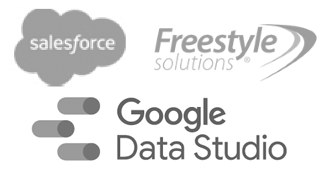The old Jazz standard illustrates the guessing game faced by today’s multi-channel marketers: how to link matchback responses to a specific marketing campaign. Veteran DM staff from postal campaigns will remember when this was a straightforward process. The returning source code and/or response device identified the proper campaign to credit. That, of course, has all changed.
Problem: This multi-channel issue was dramatized by an e-commerce client who had just completed their very first print catalog campaign. They were, of course, looking for an excellent response after the catalog dropped in July, However, matchback response reporting gave little encouragement – original results were dismal. Further research revealed that a June e-mail campaign was being credited with July responses – i.e. the June campaign was “stealing credit” for the July campaign results.
Solution: Using WiseGuys, we quickly implemented an enhancement that allowed a variable segment-specific response window-in this case, 7 days for email promotions, 90 days for the print catalog. Now the July catalog received complete credit for all the July responses, matchback results doubled, and our client was much happier with their catalog. And an A/B split test showed the catalog outperformed the control group by almost double.
Learn more: An Atlas Institute study found that users exposed to both search and display ads convert at a rate of 22% higher than search alone, and 400% higher than display alone.
 Professor’s Corner:
Professor’s Corner:
Matchback analysis is the process of analyzing an incoming order/sale, determining the source of the response, and crediting back a previous promotion/campaign for that response. Easier said than done – especially when multiple overlapping campaigns could each take credit for the response. Many complex algorithms have been written to accomplish this process. Our mantra has always been to keep it simple. Minimum Requirements: Since Matchback processing is usually outsourced, here are 6 fundamental rules to discuss with your vendor to maximize success.
- Source code capture – start with this fundamental step, knowing that today’s multi-channel environment makes this more difficult. First, determine the information value that a source code provides in your organization. For instance, the original source code of a new customer is critical to determining LTV. Then, consider online incentives for web customers to increase your source code capture rate.
- Shelf life – establish the useful life for each of your promotions (e.g. a “response window”). For email, it is probably 7 days or less. For a wholesale parts catalog, we have seen clients use as long as 12 months.
- Rules for counting responses – per the shelf life question above, should more than one response be credited back to a campaign? Our recommendation is yes, provided the response time window is reasonably short.
- Rules for overlapping campaigns – If a catalog is sent the first day of the month, then an email 7 days later, which campaign should get credit for a response on Day14? Most of our clients prefer crediting the last promotion that the customer sees. Or you may want to pro-rate the response among multiple campaigns.
- Rules for matching – to boost your count of matched responses, establish whether Matchback should include “Pass-alongs”. A mailing that is sent to one household member often generates a response from another. In B-B, counting each pass-along is even more important (e.g., a mailing to a decision maker passed to a purchasing agent).
- Rules for testing – for customer mailings, be sure your Matchback can compare “hold-back” test records with those that are mailed. Some of your customers will respond to you even without your mailings. By holding back a sample, you can measure this, by testing the “lift” of those mailed over the held back control group.
As always, call today to take advantage of our free 15 minute consulting session. “The Professor is in” at 703.941.8109.









